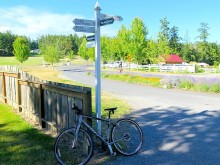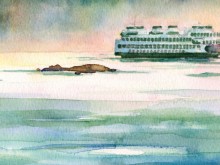Even the alpacas are happy on the San Juan Islands.
Located in the northwest corner of the United States between Seattle, Victoria, and Vancouver, the San Juan Islands are so pristine that both residents and visitors feel a shared responsibility to maintain the ecological balance. With a mission devoted to the stewardship of whales and the Salish Sea ecosystem, The Whale Museum is the nation’s first museum dedicated to whales living in the wild.
Apart from kayaking and whale watching, the San Juan Islands offer boating, birding, biking, hiking, as well as Orcas Island Trail Rides, which affords equestrians an opportunity to experience the backcountry on horseback. The islands’ charming hamlets are home to galleries and boutiques replete with handmade products and regional goods.
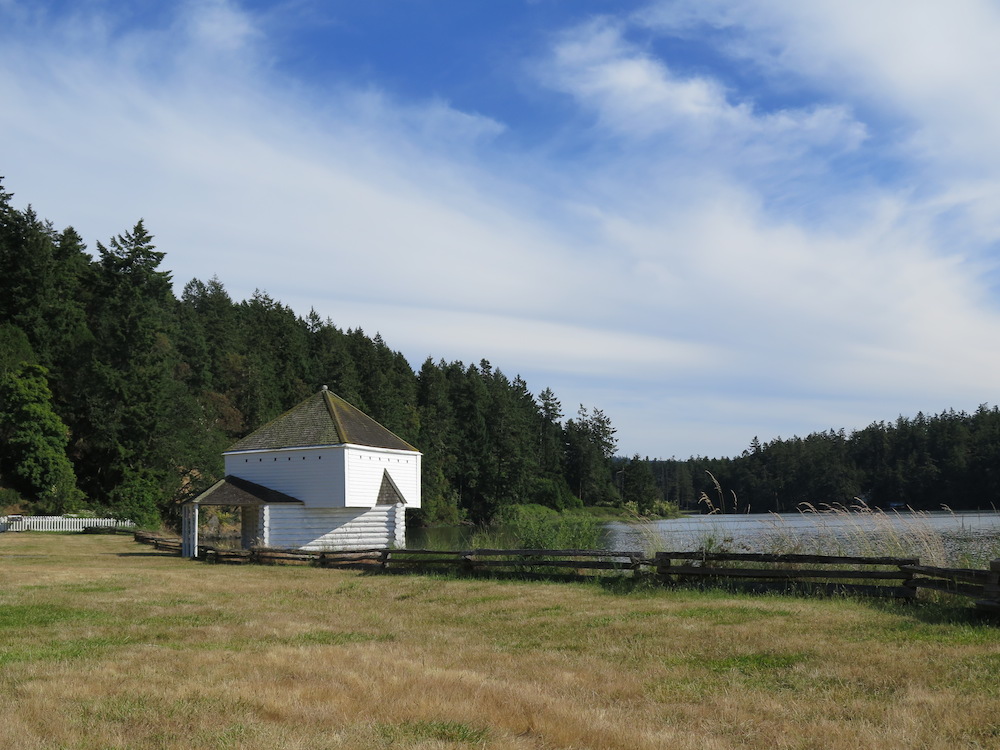
English Camp includes parade grounds and a formal garden and, as well, it’s the only US national park to fly a British flag. ©MRNY
Island History: Perhaps it’s a testament to the sanctity and beauty of the San Juan Islands that the only war casualty in their history has been porcine. The late 19th-century “Pig War” commenced when an American shot a pig belonging to the British Hudson Bay Company, whereupon a 12-year joint military occupation ensued until the issue of the islands’ occupation was settled in favor of the United States by Kaiser Wilhelm I of Germany.
Today, visitors can wander both English Camp at Garrison Bay and American Camp at San Juan Island National Historical Park. The differences are striking: English Camp includes parade grounds and a formal garden and, as well, it’s the only US national park to fly a British flag, while American Camp more closely resembles a prairie, albeit with spectacular sea vistas.

Anthony Howe’s sculpture “Beeku” resembles a stainless steel sundial, with scores of steel disks that spin with the wind. ©MRNY
Public Art: If you cruise the islands via bicycle, it’s likely that you’ll be braking for beauty – and particularly when you first witness one of the mesmerizing whirligigs of resident artist Anthony Howe. Howe’s kinetic sculpturesare in private and public collections throughout the world – as well as scattered throughout the San Juan Islands where their hypnotizing allure mirrors the natural beauty of their setting. Located at Peace Island Medical Center in Friday Harbor, the sculpture “Beeku” resembles a stainless steel sundial, with scores of steel disks that spin with the wind while mirroring the sunlight and sky.
At Arctic Raven Gallery in Friday Harbor, you’ll find a gallery that is committed to the art of indigenous cultures from the Northwest Coast, including Native American, Inuit and Alaskan artists who work in wood, stone, and bronze.
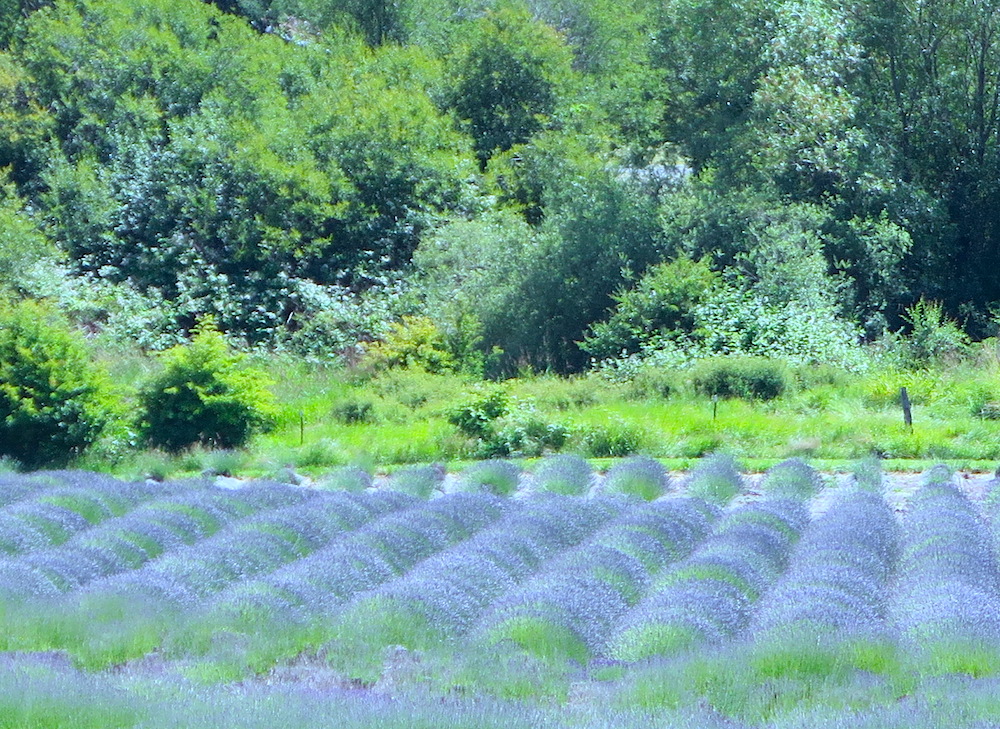
At Pelindaba Lavender Farm, located outside of Friday Harbor, purple blossoms fragrance the breeze at the 20-acre organic lavender farm. ©MRNY
On Orcas Island, Island Thyme has been making artisanal body care products since 1996, while at Pelindaba Lavender Farm, located outside of Friday Harbor, purple blossoms fragrance the breeze. Founded in 1999 by owner Stephen Robins, the 20-acre organic lavender farm is named for a South African Zulu word meaning “place of great gatherings,” a definition that becomes even more resonant during the annual San Juan Island Lavender Festival.

At Roche Harbor on San Juan Island, the Hotel de Haro (now known as Roche Harbor Resort) was built from a former Hudson’s Bay Post bunkhouse from 1887. ©MRNY
Roche Harbor: Down by Roche Harbor on San Juan Island, the Hotel de Haro (now known as Roche Harbor Resort) was built from a former Hudson’s Bay Post bunkhouse from 1887.
The founder of the Roche Harbor Lime and Cement Company remodeled the log bunkhouse (which is still visible atop the second floor stairs) for guest rooms for his customers and named the resultant hotel for the 18th-century Spanish explorer whose name identifies the strait dividing the US from Canada.
Remnants of the 4,000-acre property’s past as the “largest lime works east of the Mississippi” include the lime quarry, two original stone kilns, and the generator plant – as well as a “yellow brick road” of firebricks from the original kilns. The town’s original Methodist church (now a Catholic chapel), which doubled as a schoolhouse, still stands above the harbor.
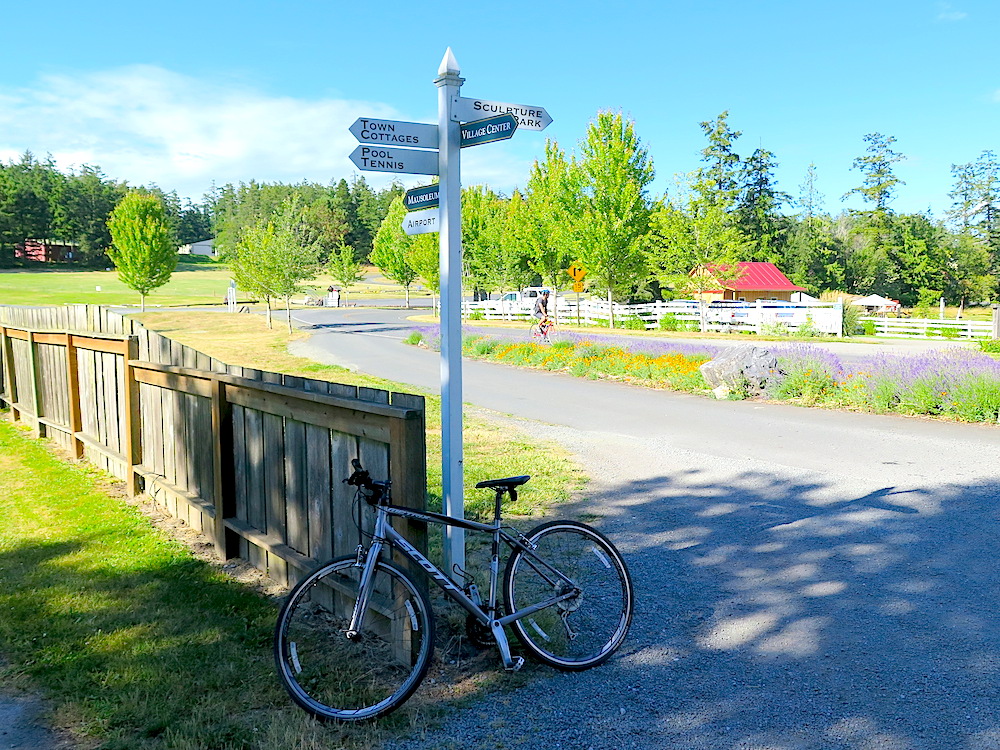
No matter when you arrive, it’s always the right time to indulge in the pleasures of the San Juan Islands. ©MRNY
Wine and Spirits: Housed in a historic schoolhouse from 1895, the tasting room of San Juan Vineyards offers tastings of San Juan Island’s sole producing vineyard and winery where winemaker Chris Primus has produced award-winning varietals from Madeleine Angevine and Siegerrebe.
On Orcas Island, Orcas Island Winery was founded in 2011, the fruition of a father-son dream. Located minutes from Eastsound near Turtleback Farm Inn, the 15-acre winery is currently planted with three acres of grape vines.
Borne of the desire to make apple brandy and gin from local apples harvested from an estate orchard, San Juan Island Distillery produces the elegantly smooth Spy Hop Gin distilled from blackberries, wild roses, lavender, and foraged tree barks in an apple-derived base spirit. The distillery’s award-winning Apple Eau de Vie is aging in oak barrels to become Washington’s equivalent to Calvados.
No matter when you arrive, it’s always the right time to indulge in the pleasures of the San Juan Islands.



